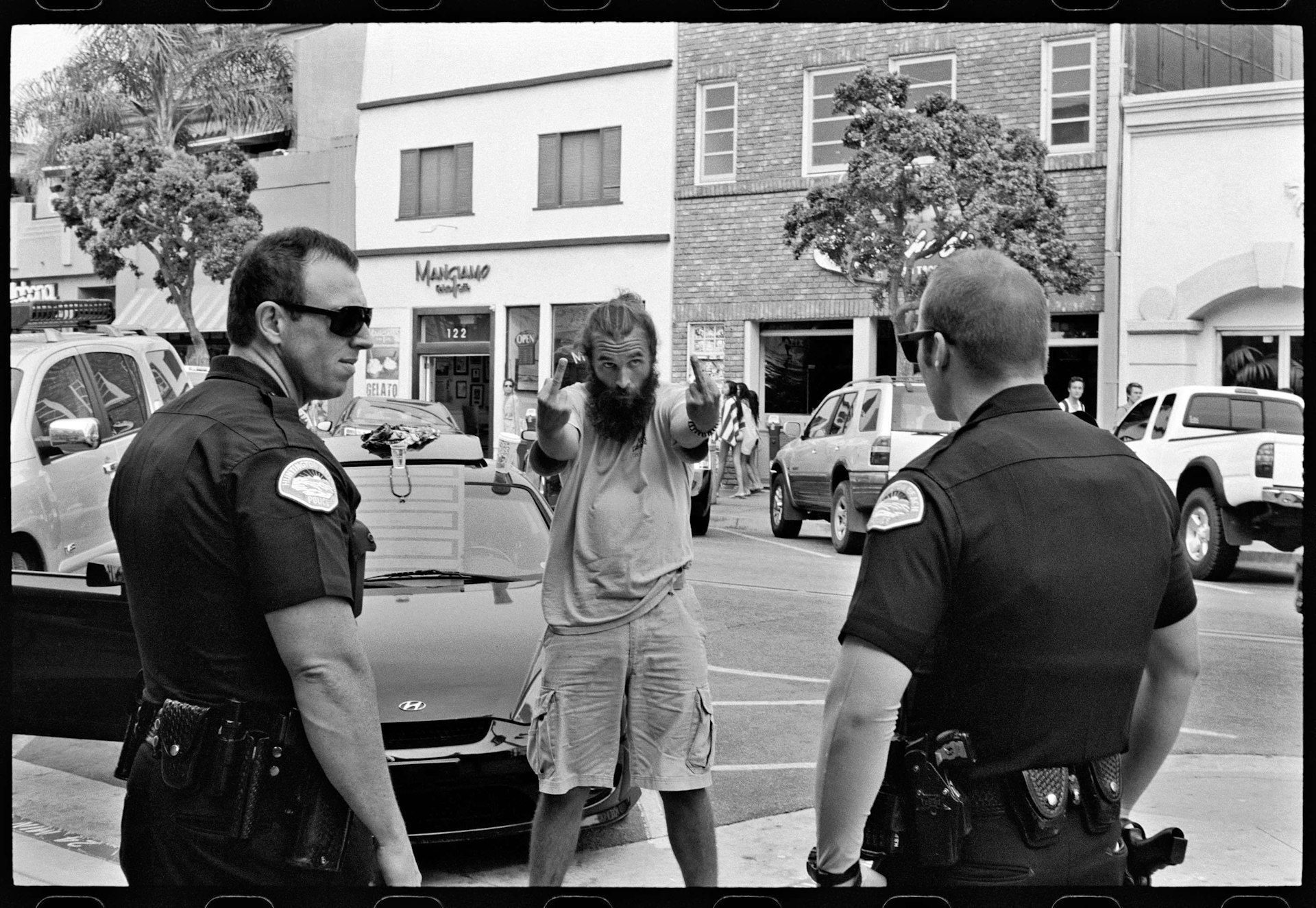
Ed Templeton’s tips for overcoming fear as a self-taught photographer
- Text by Andrea Kurland
- Photography by Ed Templeton
Ed Templeton’s daily ritual goes a little something like this: wander around Huntington Beach, home of the beach-bum and Californian cliche, and point a lens at everyday scenes that are by turns comical, mundane or absurd. Teenage lovers, selfie-stick shooters, dogs that skateboard better than their humans: these walking billboards of Americana are his daily bread.
I know all this because his daily routine has in turn become my own. After a quick zombie-swipe through Instagram Stories, checking in with people I know more about than I should (see: Painfully Hip Soho Kid, Reality TV Narcissist Who Has a Thing For Her Own Midriff, etc. etc. ad nauseum) there’s one person who I almost always seek out: @ed.templeton.
Just like Instagram itself, which seems to shift shape with Darwinian form, Ed Templeton’s feed is an ever-evolving experience that is by turns beautiful and bizarre. Pinned Emojis, for example, have really livened things up: guy doing squats on the beach is now paired with a tiny, smiling poop that bounces with ergonomic precision.
It’s funny stuff. A much-needed break from the self-serious landscape of the self-absorbed. But for every #LOL moment there is something else, something far more deeply considered: black-and-white street photography frames that could hold court with any great, as tightly composed as a Henri-Cartier Bresson, as culturally attuned as a Gary Winogrand. What makes these photographs not just good but great is the fact that they have become an act of transgression. They are the ticket that bought a “white trash kid” and skateboarding punk access to the highest echelons of the art establishment.
Ed Templeton, prolific alumni of the Beautiful Loser school of the proudly self-taught (think skaters-turned-artists Harmony Korine, Mike Mills, Shepard Fairey) has work that has hung in MOCA. His sculptures, photography and fine art have shown in some of the finest galleries in the world – from Palais de Tokyo, Paris, to the permanent collection at LACMA.
So, it was with some measure of excitement that we welcomed Ed and his photographer wife Deanna into our gallery during one of their recent London jaunts. The alchemy that day was on point. “Let’s put on a show!” someone said. So, well, that’s what we did.
On May 19, Ed and Deanna will open the doors of 71a, our gallery here in East London, to share the work of their closest friends: the core photographers of Deadbeat Club – Clint Woodside, Devin Briggs, Nolan Hall, Grant Hatfield and of course the Templetons. As we speak, the prints just got past customs, handwrapped in the couple’s own living room. Ed’s already bought his favourite hooks and pins. All that remains is a day of DIY.
With Photo London unfolding just across town, amusing the bouche’s of the art-world glitterati, our little group show will adhere to a strict come-one-come-all policy. Just don’t forget to RSVP.
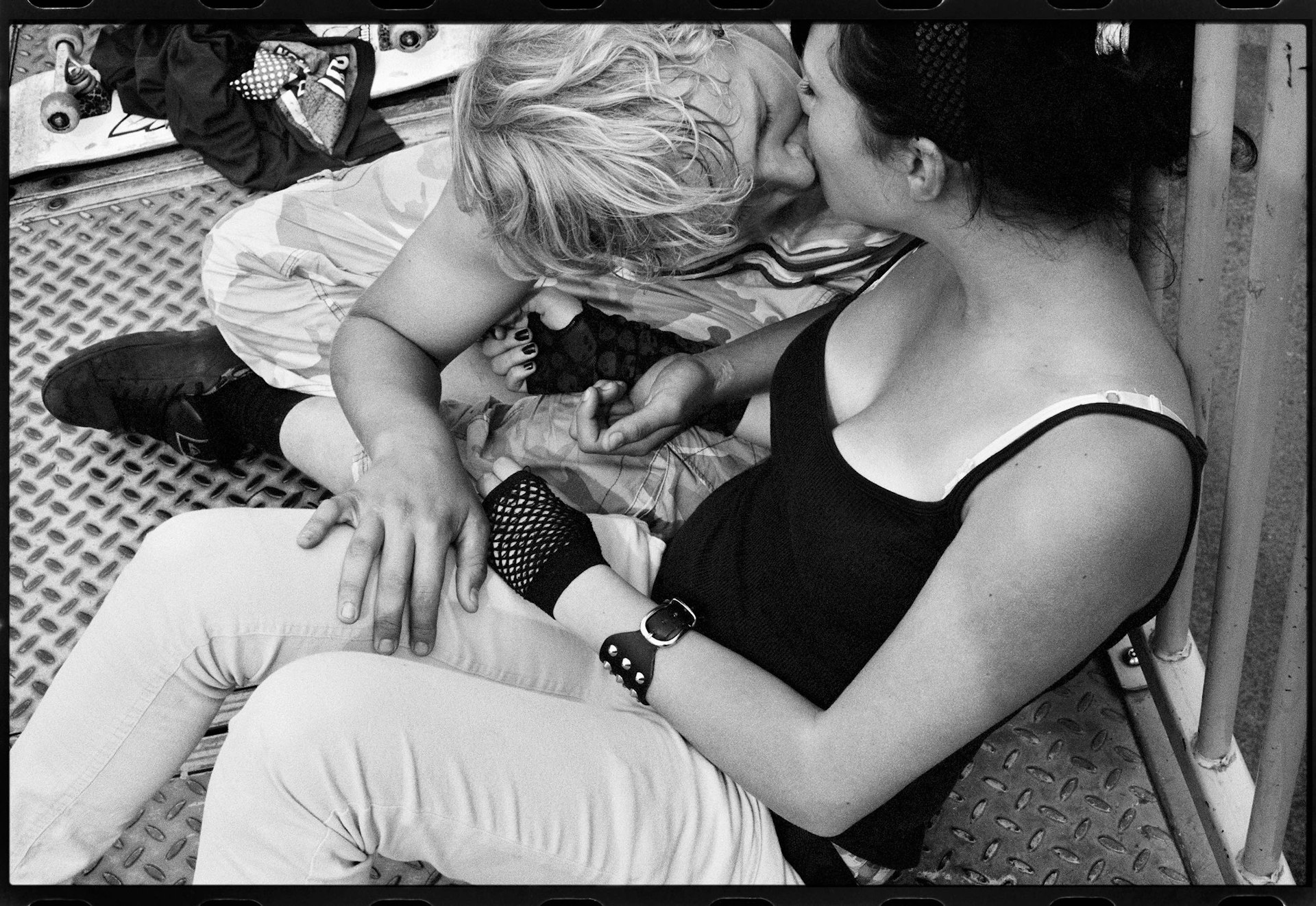
When you’re putting together a show like this, how much do you tailor it to the audience? Would you conceive of the work differently it it was for some high-end establishment like MOCA?
A little, yeah. Obviously there’ll be a bunch of people from the skate community coming to this show, and that’s in the back of my head when I’m choosing photos. Like, “Oh this imagined group would appreciate this photo.” I feel like maybe this audience will be a little more clued-in than your average gallery-going audience. But at the same time I want to mix both: I want to show the skate culture to the gallery-going masses, as much as I want to show my classic street photos that don’t have anything to do with skateboarding to the skateboard kids.
Do you think it’s an interesting time to be that artist, being transgressive and moving freely between the art establishment and outlier, DIY world?
I think it’s a great time, for sure. I’ve moved into working with some bigger galleries, but I’ve always taken part in shows that I like. I told myself that I never wanted to become one of those artists that gets too big to show in a small place, or uses words that state something is beneath them. I never wanted to leave the do-it-yourself world behind.
Right now in the United States, people are suffering in different ways. But the do-it-yourself philosophy – that’s what it’s made for: for tough times. So, any kid with a little moxie, a little bit of gumption, can get a space together, get a flyer made, and hold a show wherever he wants, in a warehouse, local skate shop, whatever. Punk shows were made out of the fact that there were no spaces to show your work: no establishment was ever going to give you a space, so you had to do it yourself. In a lot of ways do-it-yourself is foolproof at this point.
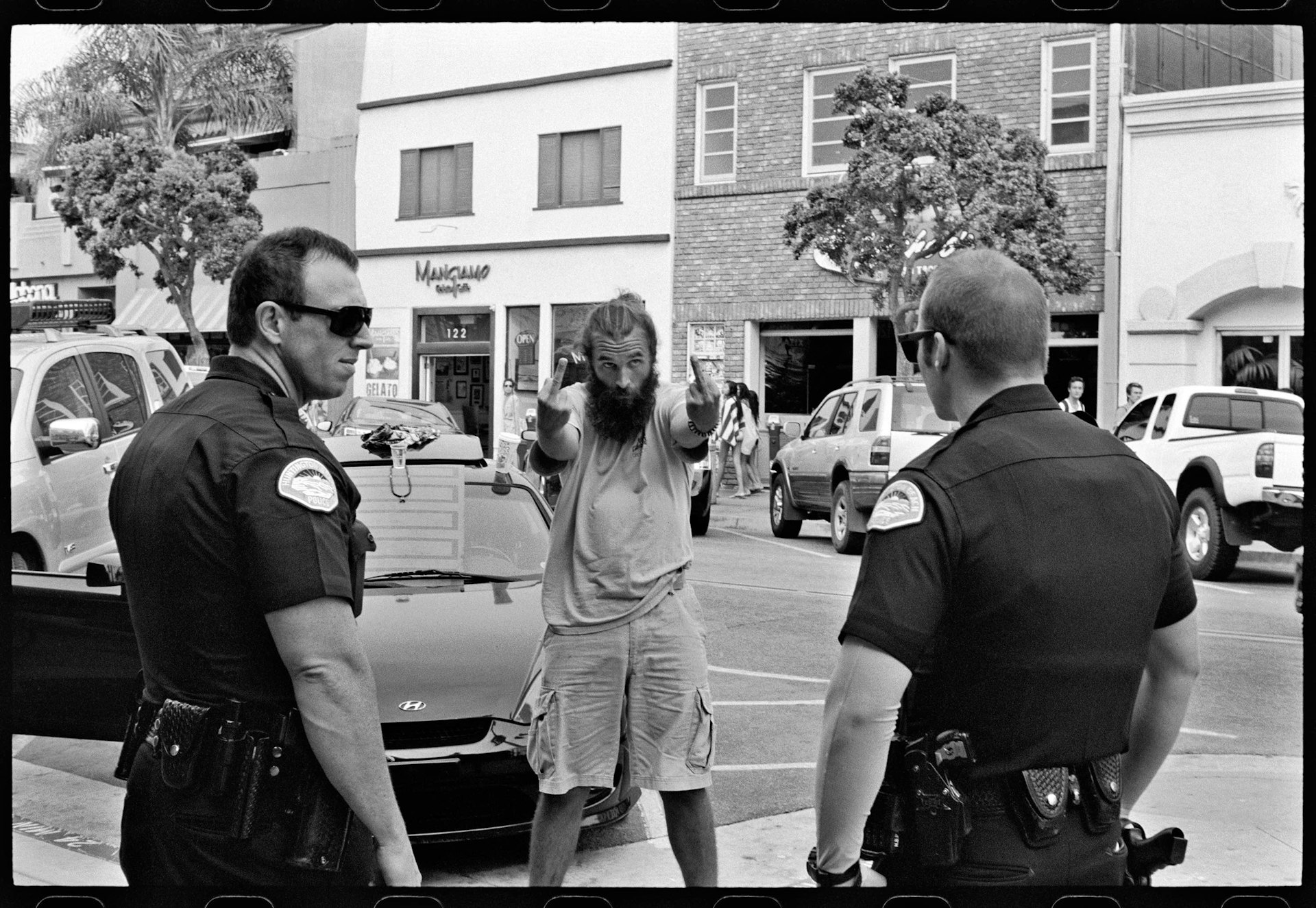
You’re a massive photobook collector. Is that part of your self-taught process, learning from other people’s work?
Yeah, I come from the school of wanting to know what’s out there, wanting to know what came before me so that I can then build on that. I like the idea of going, “Here’s where we are in the world of photography, here’s the standard, here’s the great stuff.” And it’s all subjective. I collect the books that I like, but within that world there’s a lot. And I think that I can look at that and know what to avoid, and what would be the next conversation piece: what’s the next part of that conversation that these forefathers have laid down.
How do you avoid making work that is derivative?
There are a lot of street photography tropes out there that are absorbed, even by people who don’t look at a lot of books. You just know that the blind guy with a sign is a photo because it’s been hammered in your head over the years through the famous Paul Strand photo. I like the idea of knowing that but some people go the opposite route, they don’t want to know what’s happening so they can be fresh and new. Both are valid. I’m just a fan of books in general, so that’s why I collect them. It can inform what you shoot in the future by looking at the past.
It’s interesting that, even outside the education system, you’ve naturally taken an art historian approach; looking through the work of photographers who have done historically brilliant work. Younger photographers might be doing that now with their peers, looking at what other people are producing online, because we can all share our work instantly. What’s your advice for someone who’s doing that but not yet confident in their own voice? Maybe they’re just shooting what everyone else is shooting – and know it.
I think there’s a phase a lot of photographers go through – I know I went through it, and didn’t see it. People told me that my paintings looked like Egon Schiele and I’d get pissed off. Instead of being reflective about it, I was more angry. But then, looking back 10 years, I see it clearly now. When you’re young, you copy out of love and inspiration. But the key is that at some point you have to notice that you’re doing that.
Everyone comes to those terms and goes, “Man, I’m really excited about this work, but then it’s exactly like this guy. So I have to do something else because it already exists.” Some people don’t ever get past it: they keep going and don’t really see it. Artists need to have that self awareness to check yourself and go, “Wow, this is really derivative.” And hopefully that pisses you off enough to try something different. And it’s an evolution, you can’t just stop overnight what you’re doing and change, but you can start adding things in your head, figuring out a new way to do it.
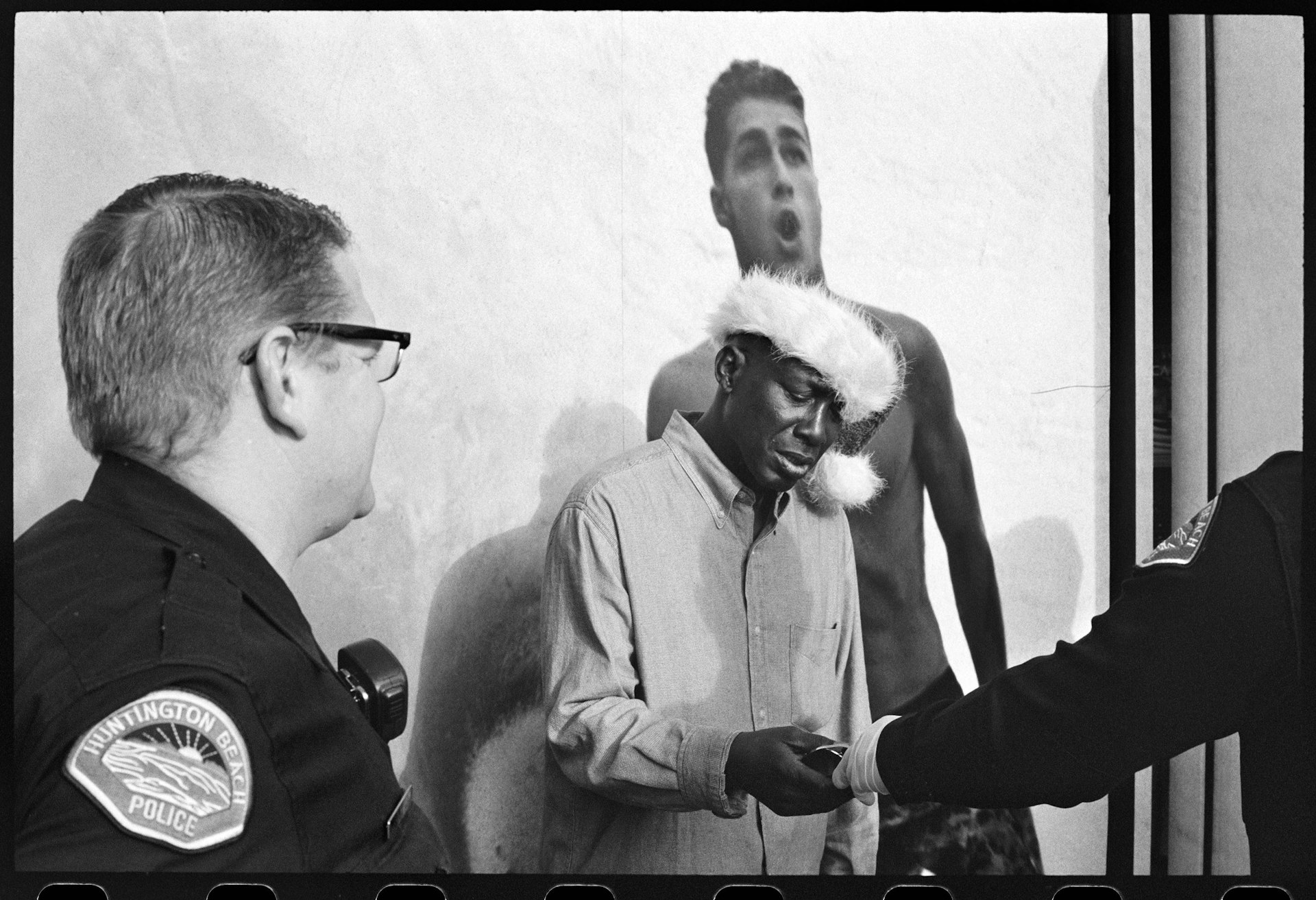
How open are you to criticism? Are you an insular artist who self-critiques or do you feed off of other peoples’ feedback?
Definitely more insular than I should be. I feel like whatever success I’ve had has been as my own editor, and so I feel pretty confident choosing my work myself without bouncing it off people. Having said that there always is feedback from Deanna, she might say something. But mostly in a way that would guard me from going in a bad direction. I might shoot something that’s a little too sexist or something, and she’ll go, “That’s kind of fucked up,” and I’ll go, “Oh, yeah you’re right.” Or more of a male gaze kind of thing. Plus, through Instagram you crowdsource critique.
I also do these edits when I do a book, for instance, that I call the harsh edit. I get it to a point, then I step away for a week, and I’ll come back to it and ask, “What if I was the dude who hates me?” Think of the person you’re jealous of, and think if this was their work, how much harder you would take it apart. I try to look at it from the devil’s advocate side and say, “I hate this, and all these photos are crap.” If I can win that guy over in my head, then I’m doing alright.
Those edits help me scrutinise the images and go, “Is this really good? Or is it just because I like it, I lived it, and I think it’s cool – what would a viewer think?” So I try to get outside of myself, and look at the work with different eyes. But that’s insular, that’s me.
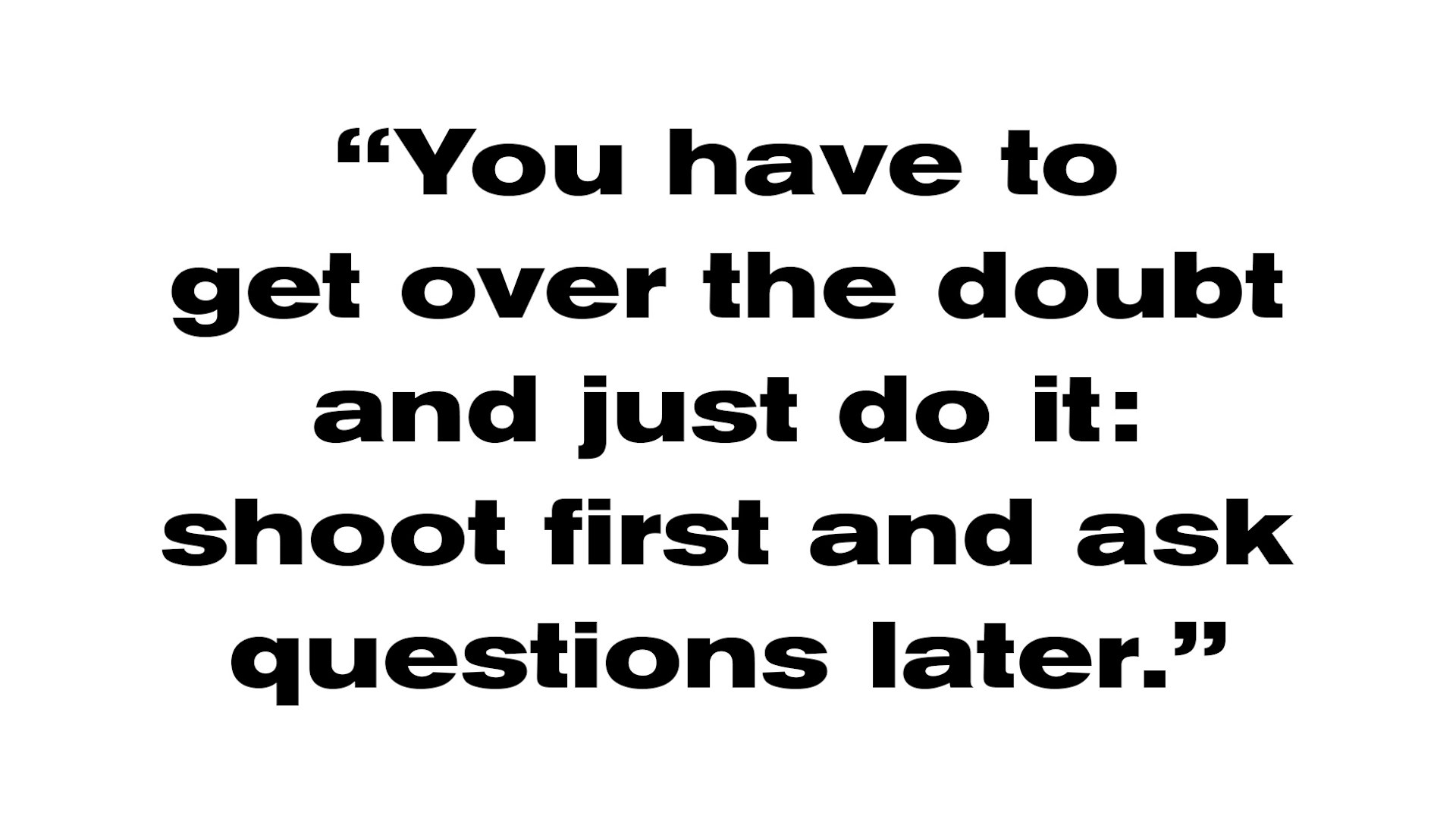
What role do you fulfil within Deadbeat Club – is it that harsh editor role? How honest are you with everyone else?
I’m not as harsh as I should be with friends, that’s for sure. I think my role has been as someone with an audience, I can help shed light on people at the Deadbeat Club, and other zines we’ve made. That makes me feel good, to share cool stuff with people. That’s why I do #photobookjousting [a hashtag that encourages people to share their favourite books], I just like to share stuff that is cool. But this all happened organically. These are all friends I was hanging out and shooting with, even before Deadbeat Club.
What advice would you have for young photographers, who look at the work that you guys produce and are inspired but riddled with self-doubt?
First of all, you have to get over the doubt and just do it: shoot first and ask questions later. I think everybody who has their own scene, that’s what it boils down to. For someone like me who started off shooting skateboard culture, I got inspired by people like Nan Goldin and Larry Clark, who were shooting their specific scenes, friends, love lives, drug habits. Super insular. Larry Clark was a druggie loser, shooting his druggie loser friends, but that ended up being a super interesting body of work. It became famous because it was such an insider look at a world that people weren’t aware of.
Everyone has their own scene, so these kids should just start with that: start with your scene. You’re not copying Nan Goldin because there’s no way your scene is going to look like hers. There’s no way you’re going to look like Larry Clark’s Oklahoma from the ‘50s – you’re from modern times, so shoot what you have in front of you. Just shoot, shoot everything, and then think about it later.
What’s your personal inner-monologue when you’re about to shoot someone in the street and you have to get up in their face? What do you tell yourself to rationalise that interaction?
I struggle the same way anyone would. I shoot here where I live in Huntington Beach all the time. I can’t be as harsh as I might be in a new place, because I walk the same street everyday. That makes me more shy than I should be. I remember to get close, get in front of people, and then when that rare thing happens, it becomes a small battle: is it worth it? A lot of times it’s not. But then sometimes – this guy is dressed a certain way, doing this thing, and I need to shoot it no matter the consequences. So I try to recognise when those things happen. I give myself a little pep talk in my head: be confident, if you see something, go get it.
Having said that, I’m more scared of people than they are of me. I think it’s my own neuroses. I’m self conscious where I notice things, I’m aware of people looking at me, but people are often not as self aware as you would expect. I look at my photos, and almost no one sees me. I get asked, “How many people get angry at you?” And the honest answer is almost never. Because people are unaware, or a smile disarms a lot of things. They see me, and I’m ready with a smile or compliment, like, “Hey, your hair looks cool.” So they kind of understand why you might have shot them. If they think, “Hey, this guy’s shooting me because he thinks I look like an idiot,” then they might get angry, but you can diffuse that. It takes a lot for someone to want to fight you on the street.
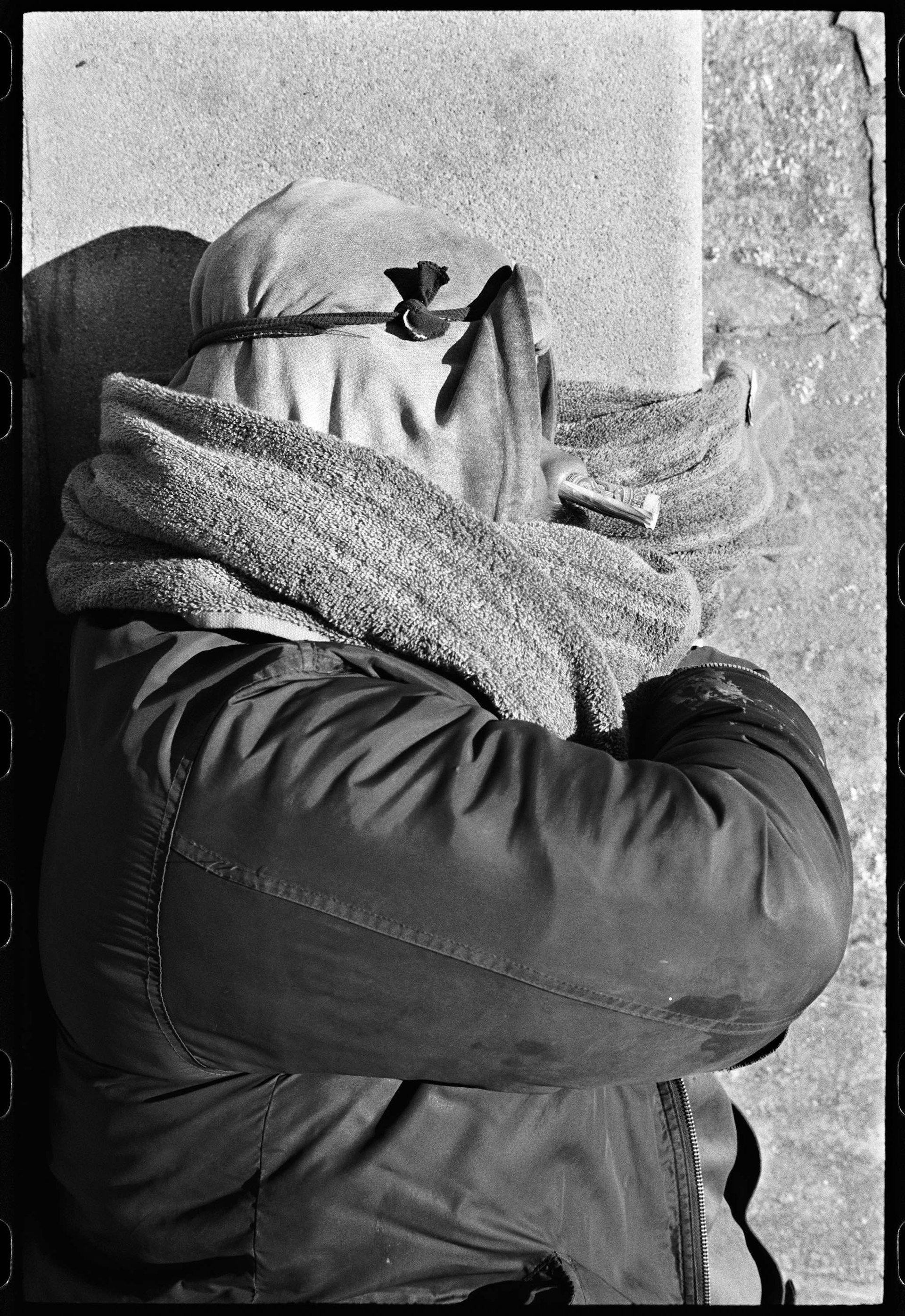
What makes you get up and shoot the same surroundings that you’ve always known?
It’s partly laziness. I often think I should go to other places, but then out of laziness I just go downtown and take a walk on the beach. The big reason is getting out of the house and getting some exercise – get a little sun, get a little walk, with the side benefit that I’m out shooting photos. Otherwise I’m sitting at the computer all day.
Obviously when something happens, you approach it more like a photographer – you might know some event’s going to happen, so you’ll go specifically to shoot that. But typically, we’ll take a walk and see what’s happening down there. Some days we take a walk for an hour and shoot one or two photos. Other days there’s a bunch of people out doing weird stuff, and it’ll be two hours of shooting. We like the days when it’s cloudy and cold and people aren’t around because it isolates everything and it brings a different kind of person. It sharpens your view of the place.
Does your shooting style change when you’re in a place you have no cultural connection to?
Yeah, it does a little. In 2007 we went to Russia for the first time and I had no idea what the culture was like, and if anything it gave me more confidence. I went in thinking this might be the only time I get to visit this place, so I really want to squeeze all the juice out of it. I was ruthless -,hanging out the car, shooting every walk, even getting up in people’s faces, because when was I going to get here again? Instead of being shy I think I got more involved: this was my chance to not leave having regrets about all the stuff I was too afraid to shoot. And having done that I realised no one was going to kill me, so that helped me keep going. In general I try to go to new places with the same zeal. You have to test the waters, see what happens and go from there.
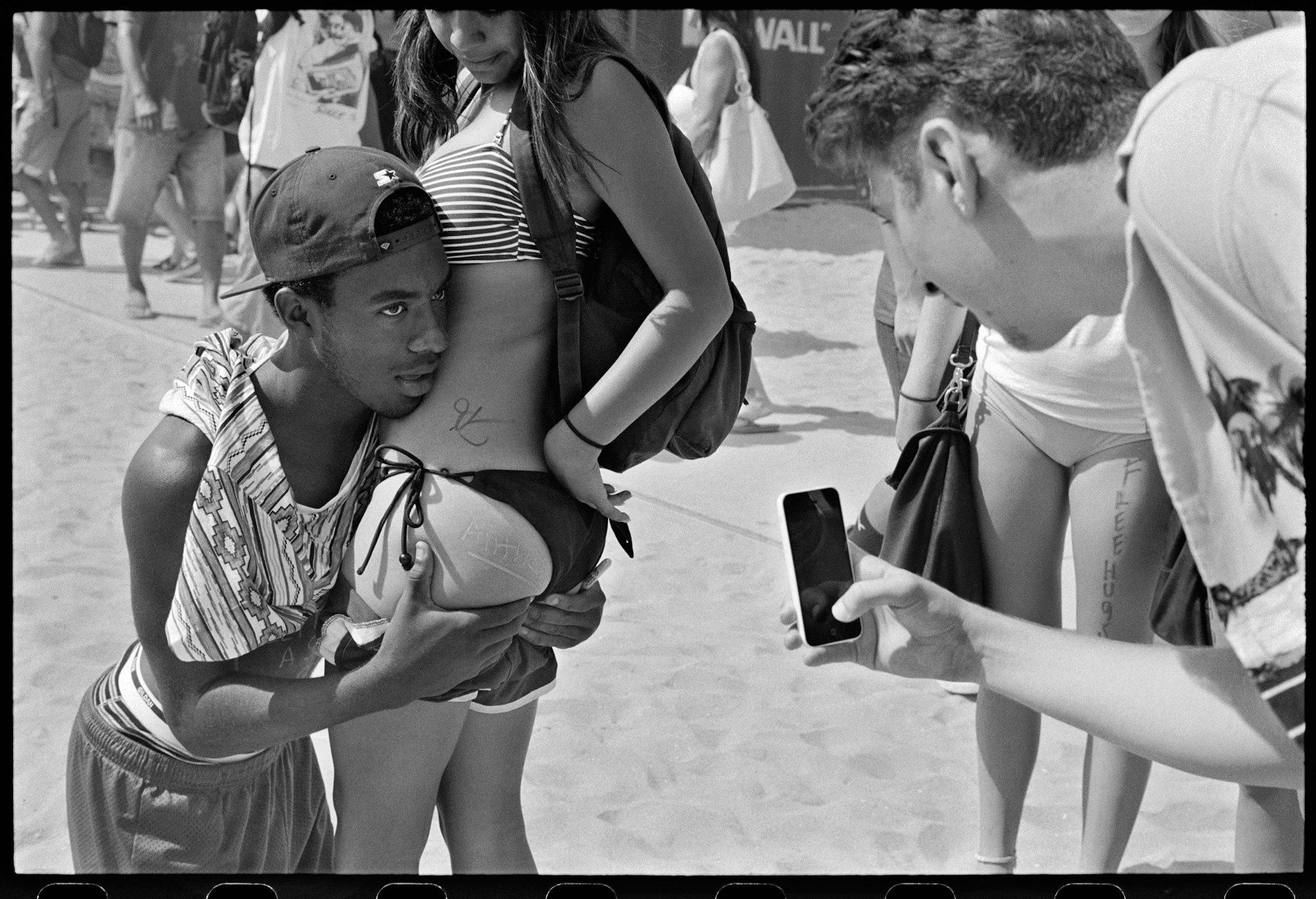
Do you find that anyone else in Deadbeat Club comes to you as a mentor?
Yeah, for sure. But at any given moment I’ve helped everybody and they’ve helped me. Of course Deanna’s here at the house with me, so I’ve definitely worked with her on everything, she’s not as computer savvy, so I help her with layouts and stuff like that. Then Nolan will come to me with zine edits and get my opinion. Devin is a little more shy, he’s just funnier about how he approaches it. Clint is confident in what he’s doing, and knows the work he’s making isn’t the work I make, so he likes to show me stuff to get a different opinion. But it’s more a, “Here’s what I’m working on” type of way not “give me some advice”. Everyone helps everyone.
Is there a piece of advice that you often return to that spurs you on?
It might have been Larry Clark who said this: “Just take two steps closer.” I like photos that are up in the action and close to people. I’ll look at portfolios of younger people, and everything seems to be from a strange distance. A lot of times it’s about confidence and fear, but a lot of time people shoot the backs of people. Get close, see the whites of their eyes, and then shoot. It’s always a good starting point.
Huck x I.P.F Present… Deadbeat Club: Zineophobia runs 19-28 May at 71a Gallery, London.
Private View: Friday 19 May, 6-9pm (RSVP Essential)
Deadbeat Club: Zineophobia is supported by RVCA Artists Network Programme.
